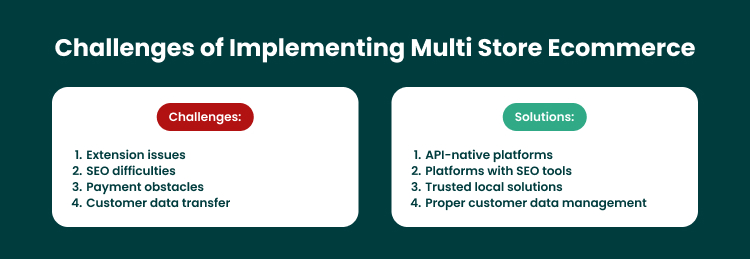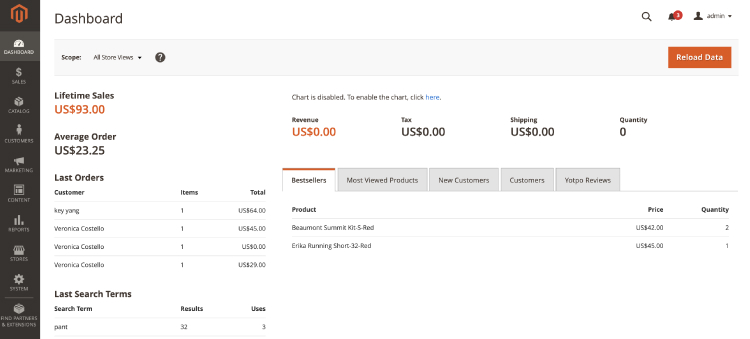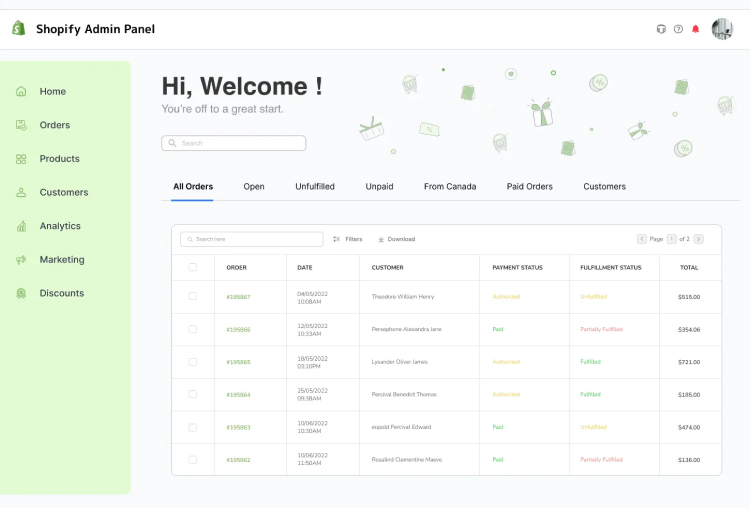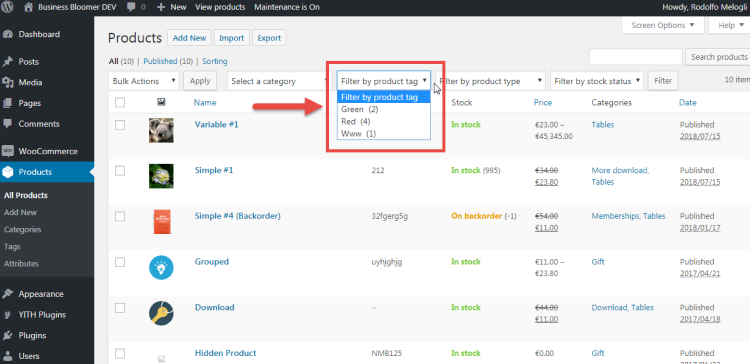“Ecommerce isn’t the cherry on the cake; it’s the new cake.” These words by Jean Paul Ago remind us that sticking to traditional business models is no longer a win-win strategy. To succeed, you need innovative ways to grow your company.

E-commerce can be tough. You need to struggle to reach diverse audiences. You have to manage too many products. Plus, you must consider whether your business can scale up to keep it running smoothly. All of this can feel overwhelming, but we know how to help. The solution we offer is a multi store ecommerce platform.
With multi store ecommerce, you can create shops for specific audiences, centralize operations in one dashboard, and easily add new stores while sharing resources. With the right platform, you’re ready to grow smarter.
You might wonder, “Where should I start, and what steps I need to take to succeed?” The good news is that the ecommerce world is full of triumphant businesses you can learn from. By following their example, you can avoid common mistakes and create a solid base.
Luckily, you’ve come to the right place. Forbytes has years of ecommerce expertise, and we’re here to guide you. Let us show you how multi site ecommerce can boost your business and suggest popular options on the market stall. We hope they’ll lead you in the right direction.
What Is a Multi Store Ecommerce Platform?
As your stores grow, managing them separately can become a hassle. It’s like running three different businesses. You must connect them all to the same systems, like warehouse and accounting, and keep everything consistent. Missing any detail puts you at risk of losing revenue and getting unhappy clients.
A multi store ecommerce platform lets you manage all your stores from one place. You get separate storefronts for different brands or regions, but everything is controlled through a single admin dashboard. It’s cheaper, easier, and more flexible for scaling.
Need advice on building a multi store ecommerce platform? Contact Forbytes, and we’ll set up a meeting to discuss your needs.
How You Can Benefit from Implementing Multiple Store Ecommerce
According to the latest report, the global B2B ecommerce market is expected to reach $33,317.37 billion by 2030, growing at a rate of 20.2% per year. Impressive, right? This rapid growth is driving the adoption of multi store and multi tenant ecommerce platforms.
What does this mean for you? It means now is the perfect time to boost your business with a multi store ecommerce platform. But before you start, it’s important to understand the key benefits you’ll gain by taking this step.
- Creating stores for different brands: If your company has many brands, a multi store ecommerce platform lets you create separate stores for each one. This keeps their unique identity intact while using one easy-to-manage backend system. 76% of consumers prefer to buy products from brands they feel connected to.
- Targeting niche markets: Got a specific audience in mind? Instead of changing your main store, you can create a separate storefront tailored to their needs. This approach makes targeting easier without increasing costs. Businesses that target niche markets can see a 2.5 times higher return on investment (ROI) compared to those targeting broader audiences.
- Expanding globally: Want to expand globally? A multi-store setup helps you customize stores for each country. You can add local languages, currencies, and content. This makes ecommerce more personal for your clients. 28% of online businesses want to go global by applying ecommerce localization. Multi-store management makes it easier to grow internationally.
- Supporting multiple business models: If you work with different business models like B2B or B2C, a multi store e-commerce platform helps you manage them all seamlessly under one admin. 85% of businesses using multi store platforms say they can easily adjust to different market needs and manage both B2B and B2C models efficiently.
- Managing everything in one place: You can run all your stores from one central dashboard. Update products, content, or pricing for any store without juggling multiple platforms. Businesses with centralized systems save 30% on operational costs.
Want to learn more about the benefits of multi-store ecommerce? Reach out to our team, and we’ll help!
What Downsides to Expect When Implementing Multi Store Ecommerce
Every medal has its reverse. So, it’s important to understand the downsides of multi store ecommerce and prepare a plan to address them. We’ve listed both the challenges and potential solutions to help you.
Challenge 1: Extension issues: Your stores might be different, so when upgrading one, you need to make sure the others can support it. 48% of online retailers cite extension compatibility as a primary issue in multi-store operations
Solution: With an API-native platform, you don’t have to worry. It lets you upgrade each storefront easily, step by step, without any hassle.
Challenge 2: SEO difficulties: If you sell similar products across different stores, getting good SEO results for all can be tricky. 48% of online retailers cite SEO as one of the most difficult aspects of managing multiple stores.
Solution: Look for platforms that offer SEO tools to help you optimize each store and attract traffic.
Challenge 3: Payment obstacles: Running stores in different regions means handling different currencies, tax laws, and accounting. 45% of online retailers struggle with handling multiple currencies, while 52% of businesses have trouble managing different tax laws and regulations in various regions.
Solution: Choose a trusted local solution that can integrate with your platform or ask your vendor to build the right payment module.
Challenge 4: Customer data transfer: Make sure you know the data protection rules for the region you’re operating in. 60% of businesses struggle with international data transfers because of different laws in each region.
Solution: Make sure that you handle customer data properly to stay compliant.
As you can see, the downsides of multi store ecommerce can be fixed. So, why let them stop you from using this solution?
Key Features of a Great Multi Store Ecommerce Platform
Now, it’s time to define the criteria for a great multi store ecommerce platform. We recommend considering these features when making your choice:
- User-friendly interface: Intuitive dashboards to manage stores and ensure a smooth shopping experience for customers.
- Product management tools: Manage product catalogs, customer data, orders, payments, and shipping across multiple stores.
- Inventory management tools: Track stock levels, update products, and process orders with ease.
- Performance tools: Ensure fast load times and handle high traffic without crashes.
- Integration capabilities: Easily connect with third-party systems to simplify workflows.
- Customization options: Tailor the store’s design and functionality to align with your brand.
- Payment gateway integrations: Provide secure and convenient payment options for customers.
- Scalability: Support business growth by handling more products, customers, and transactions.
- SEO features: Optimize your site for search engines to attract and reach more customers.
- Security measures: Protect your store and customer data with features like two-factor authentication.
These are core features that a multi store ecommerce platform needs to transform your business and deliver the results you want. Keep them in mind when picking your solution.
Top 3 Multi Site Ecommerce Platforms to Consider for Your Business
Now that you understand the benefits of implementing a multi-store eCommerce platform and know the criteria for choosing the best one, we recommend these 3 options for your business.
Magento
Magento is an open-source ecommerce platform that makes running multiple stores easier. It lets you manage inventory, customers, and orders all from one database. So, it can save your time and effort.
Magento is among the top ten most popular ecommerce platforms globally, with over 240,000 live websites using it.
What makes Magento great? It’s super scalable and customizable. Whether you’re selling hundreds of products or tens of thousands, it ensures a fast, smooth shopping experience for your customers.
Best for: Magento is great for medium to large businesses with complex needs and a budget to match.
Key features for a multi store ecommerce platform:
- Inventory management across many locations
- Support for multiple currencies and languages
- Built-in marketing and promotional tools
- Flexible payment and shipping options
- Highly customizable architecture with strong API support
What makes Magento not the best option? It’s complex and requires significant technical expertise, time, and budget to set up, customize, and maintain effectively.
If your business doesn’t need complex features or you don’t have the budget for technical help, platforms like Shopify or WooCommerce might be a better fit.
Shopify Plus
Shopify Plus is a great solution for managing multiple stores without worrying about hosting, security, or performance. It’s super easy to use, and you can manage up to nine free stores in addition to your main one.
Shopify Plus is trusted by over 32,000 online stores, showing how popular and reliable it is. It can handle up to 80,000 requests per second, so your store runs smoothly even during busy times.
What makes Shopify Plus great? Shopify Plus allows unlimited stores under one brand, so you can add more stores easily.
Best for: Businesses that need advanced tools and the capacity to handle large sales smoothly.
Key features for a multi store ecommerce platform:
- Unlimited stores
- Integration with major ERP, CRM, and third-party apps
- Access to B2B and wholesale channels
- Fully customizable checkout
- 24/7 support
What makes Shopify Plus not the best option? It’s expensive and less customizable compared to other platforms.
If your business needs advanced features or complete control over hosting and customizations, platforms like Magento might be a better fit.
WooCommerce
WooCommerce is a free, open-source multi store ecommerce platform that works with WordPress to help you set up multiple online stores. You can create stores with separate catalogs using WordPress Multisite or use a plugin to manage multiple stores.
WooCommerce powers about 25% of all online stores, making it one of the most popular eCommerce platforms. Over 6.3 million websites use the WooCommerce plugin worldwide.
What makes WooCommerce great? WooCommerce is flexible and easy to customize with plugins. It supports different currencies, languages, and payment options. That’s why it’s a great choice for small businesses looking for an affordable way to manage multiple stores.
Best for: Small businesses that need a budget-friendly ecommerce platform or already use WordPress.
Key features for a multi store ecommerce platform:
- Easy-to-use interface
- Support for multiple languages and currencies
- Flexible shipping and tax setup
- 140+ region-specific payment gateways
- Huge library of themes and plugins for customization
What makes WooCommerce not the best option? It requires technical skills and additional costs for plugins to unlock advanced features.
If your business doesn’t have technical expertise or needs a fully managed solution, platforms like Shopify might be a better fit.
So, as you can see, each option has its pros and cons. The choice of a multi store ecommerce platform depends on your business needs. Consider factors like scalability, customization, budget, and ease of management before making a decision.
How to Pick a Multi Store Ecommerce Solution
At first glance, choosing a multi store ecommerce platform might seem like an easy task: just find the right vendor. But as you may have already guessed, it’s too easy to be true. So, to help you set the course, here are some tips on picking a multi store ecommerce solution.
First, assess your tech skills. If you lack them, not all platforms may suit it. If you’re not very tech-savvy, go for a platform that’s easy to use and doesn’t require much coding, like WooCommerce.
Second, focus on your needs. Figure out why you need multiple stores. For example, if you want a B2B store, make sure the platform supports that. If you’re selling globally, look for one with multi-currency and multilingual support. For example, Magento can work great in this case.
Third, think about your budget. Different multi store ecommerce platforms come with different costs. Set a budget and pick a platform that gives you the features you need without breaking the bank.
Fourth, consider your products. If you have a large catalog or sell different types of products (physical, digital, bundled), choose a platform like Magento that can handle it.
Fifths, check for open-source code. Open-source platforms make future upgrades and changes easier for you.
Finally, list the features you need. We’ve already provided a list. Just ask the vendor if these features are available now or can be added later.
Not sure which a multi store ecommerce platform to choose? Contact us, and we’ll help you find the best solution.
Need Help with Implementing a Multi Commerce Approach?
As mentioned before, your choice of a multi store ecommerce platform largely depends on the size of your business and goals. If you’re just starting out or have a small to mid-sized business, WooCommerce is a solid choice.
But if your company is growing and you need more flexibility, Shopify Plus or Magento may be the right solution. It’s perfect for larger businesses with an established customer base or if you’re ready to invest in your growth.
And when you need a team to assist you, Forbytes has you covered. Having expertise in e-commerce for even the most advanced requirements, we can take on your project and turn your business idea into reality. So, choosing between diverse multi store ecommerce platforms won’t be a dilemma for you.
Need help with implementing a multi commerce approach? Contact our expert team today for a free consultation.













